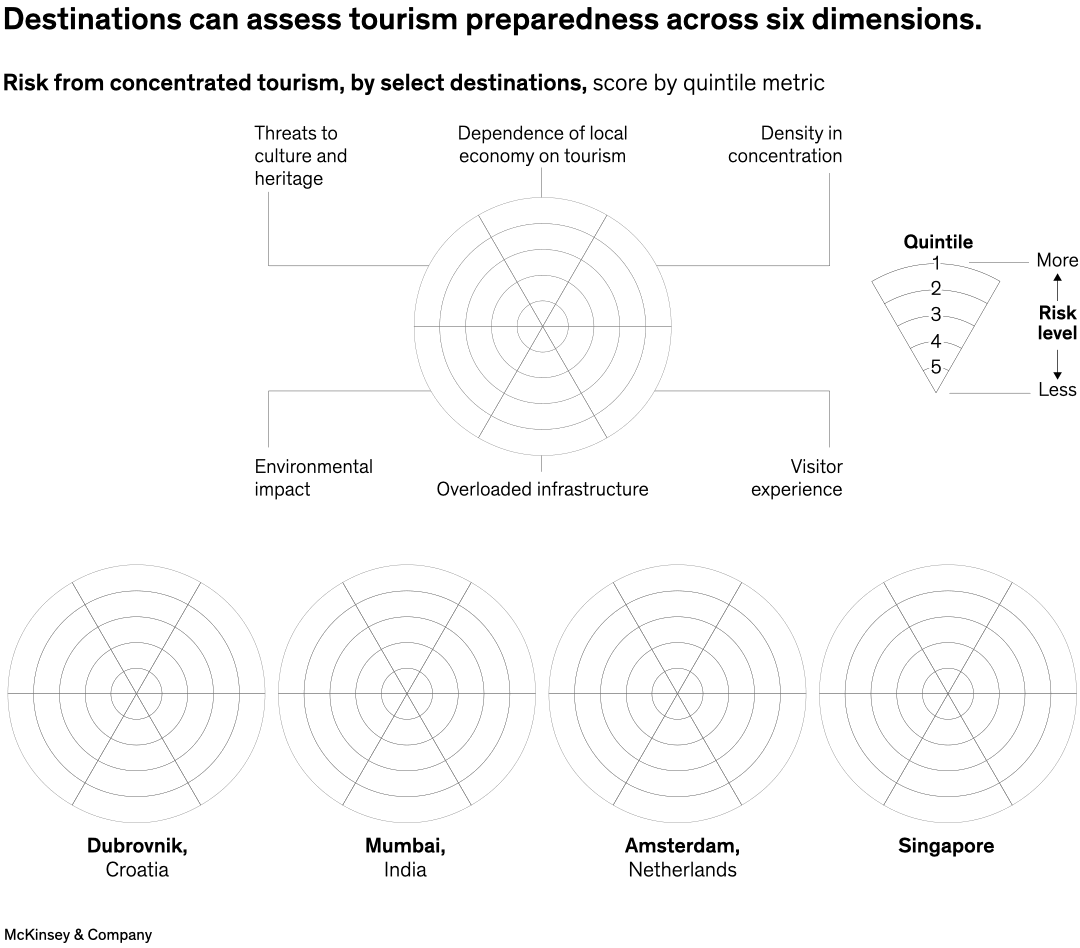Summer has arrived in the Northern hemisphere. All this week, our daily charts will focus on travel and tourism. We’ll explore shifting travel preferences, new business models, luxury travel, disruptions affecting the industry, and more.
Tourism can bring big economic benefits to destinations, but it can also cause negative effects, such as overcrowding, environmental damage, and threats to local culture. Senior partner Matteo Pacca and colleagues present a framework for assessing tourism preparedness across six dimensions. This framework can help destinations identify and mitigate areas where tourism puts their cities at risk.

Image description:
Spider graphs show a quintile metric for six risks created by concentrated tourism: dependence of local economy on tourism, density in concentration, visitor experience, overloaded infrastructure, environmental impact, and threats to culture and heritage. A few insights can be immediately gleaned for the four example cities graphed. Dubrovnik, Croatia, is in the highest risk quintile in four metrics: dependence of local economy on tourism, density in concentration, overloaded infrastructure, and environmental impact. Mumbai, India, is in the highest risk quintile in only visitor experience. Amsterdam, the Netherlands, is also in the highest risk quintile in only one metric: density in concentration. Singapore scores relatively well in all metrics.
End of image description.
To read the article, see “Destination readiness: Preparing for the tourist flows of tomorrow,” May 29, 2024.